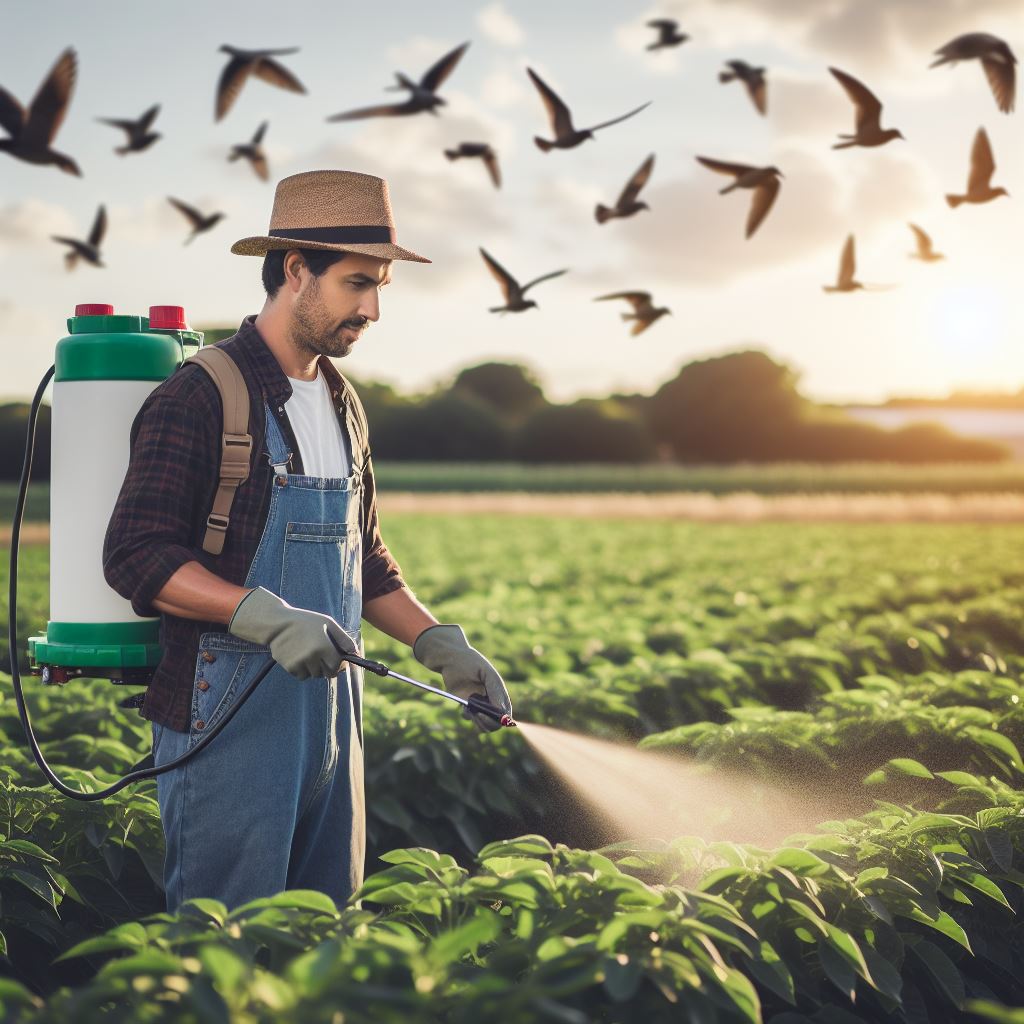Introduction
Importance of conservation farming
Conservation farming plays a vital role in achieving sustainable agriculture and preserving our environment. By implementing conservation farming techniques, we can protect soil quality, conserve water, and reduce the use of chemical inputs.
Purpose of blog post
In this blog post, we will discuss some of the best tips for successful conservation farming.
These tips will help farmers optimize crop production, enhance soil health, and contribute to the overall sustainability of their farming practices. So, let’s dive into these valuable insights on conservation farming!
Tip 1: Soil Health Management
Significance of soil health for conservation farming
Soil health is crucial for successful conservation farming. By improving and maintaining soil health, farmers can optimize their yields while preserving the environment.
Practices such as crop rotation, cover cropping, and minimizing tillage
One important practice in soil health management is crop rotation. This involves planting different crops in a specific sequence over several seasons.
Crop rotation helps prevent the buildup of pests and diseases, as different crops have varying nutrient requirements and growth patterns.
Cover cropping is another beneficial practice. It involves planting cover crops such as legumes, grasses, or brassicas during fallow periods.
These cover crops help control erosion, suppress weeds, and improve soil fertility by adding organic matter when they are incorporated into the soil.
Minimizing tillage is also key in soil health management. Excessive tillage disrupts soil structure, destroys beneficial soil organisms, and increases the risk of erosion.
Reduced or no-till methods help preserve soil structure and organic matter while improving water infiltration and reducing erosion.
The benefits of these practices in maintaining soil fertility and structure
The benefits of these soil health management practices are numerous.
Firstly, crop rotation reduces the need for synthetic fertilizers and pesticides as the diversity of crops naturally breaks pest and disease cycles.
This helps minimize the environmental impact of farming and reduces production costs for farmers.
Cover cropping provides many advantages as well. It helps prevent soil erosion by protecting the soil surface from wind and water.
The cover crops’ extensive root systems also improve soil structure, enhance water-holding capacity, and increase nutrient availability.
Transform Your Agribusiness
Unlock your farm's potential with expert advice tailored to your needs. Get actionable steps that drive real results.
Get StartedAdditionally, cover crops contribute to carbon sequestration, reducing greenhouse gas emissions and mitigating climate change.
Minimizing tillage protects soil structure and reduces compaction, allowing for better root development and nutrient uptake by plants.
It also preserves soil moisture and reduces water runoff, leading to increased water-use efficiency.
Furthermore, reduced tillage practices facilitate the buildup of organic matter in the soil, improving nutrient cycling and long-term soil fertility.
In summary, soil health management practices like crop rotation, cover cropping, and minimizing tillage are invaluable in conservation farming.
They promote sustainable agriculture by preserving soil fertility and structure, reducing the use of synthetic inputs, preventing erosion, and mitigating climate change.
By implementing these practices, farmers can enhance crop productivity while safeguarding the environment for future generations.
Read: Integrated Pest Management for Crops
Conservation Farming Tips: Water Conservation Techniques
Water conservation is crucial in farming to ensure sustainability and maximize crop yield. Implementing effective water conservation techniques can significantly reduce water wastage and increase overall efficiency.
In this section, we will explore three essential methods: drip irrigation, mulching, and contour plowing.
Drip Irrigation
Drip irrigation is a method that delivers water directly to the roots of plants, minimizing evaporation and optimizing nutrient absorption.
It involves the use of a network of tubes or pipes with small holes positioned near the plants for targeted water supply.
This technique helps conserve water as it provides moisture only where needed, reducing overspills and evaporation losses. Drip irrigation can save up to 50% of the water compared to conventional sprinkler systems.
Mulching
Mulching involves covering the soil surface with organic materials like straw, leaves, or wood chips. It acts as a protective layer that conserves moisture by reducing evaporation and preventing weed growth.
This technique helps retain soil moisture, allowing plants to access water for a more extended period. Additionally, mulching helps regulate soil temperature, prevents erosion, and improves soil structure over time.
Contour Plowing
Contour plowing is a method of tilling the land along the natural contours of the terrain. By plowing perpendicular to the slope, it creates basins and furrows that capture and retain rainfall or irrigation water, preventing runoff.
Contour plowing helps slow down water movement, allowing it to infiltrate the soil effectively. This reduces erosion and enhances water availability for plants, promoting healthier root growth and reducing the need for additional irrigation.
Benefits of Water Conservation Techniques
Implementing these techniques offers numerous advantages for conservation farming:
- Water Efficiency: By using targeted irrigation methods like drip irrigation, water wastage is minimized, ensuring optimal water usage.
- Increased Crop Yield: Adequate water supply, coupled with reduced evaporation and efficient nutrient absorption, promotes healthier plant growth and higher yield.
- Resource Conservation: Water is a precious resource, and implementing these techniques helps conserve water for future agricultural needs.
- Soil Health: Mulching and contour plowing improve soil quality and water retention capacity, providing a nurturing environment for plant roots.
- Cost Savings: Water conservation techniques generally reduce the need for excessive irrigation, leading to lower water bills and decreased energy usage.
- Eco-Friendly Farming: By minimizing water wastage and preventing soil erosion, conservation farming practices help protect the environment and preserve natural resources.
To summarize, water conservation techniques play a vital role in modern farming practices. Implementing drip irrigation, mulching, and contour plowing can significantly reduce water wastage and increase overall efficiency.
By adopting these methods, farmers can promote sustainable agriculture, increase crop yield, and contribute to a greener future.
Read: Composting: Organic Nutrient Powerhouse
Tip 3: Natural Pest Control
Importance of Minimizing Pesticide Use
Using fewer pesticides in conservation farming is crucial for several reasons. First, it helps protect the environment by reducing chemical pollution.
Pesticides can contaminate soil, water, and air, harming beneficial insects, wildlife, and even humans.
Moreover, excessive pesticide use can lead to the development of pesticide-resistant pests, making it harder to control them in the long run.
Showcase Your Farming Business
Publish your professional farming services profile on our blog for a one-time fee of $200 and reach a dedicated audience of farmers and agribusiness owners.
Publish Your ProfileLastly, minimizing pesticide use saves farmers money since they won’t have to spend as much on expensive chemicals.
Practices like Integrated Pest Management (IPM)
Integrated Pest Management (IPM) is an effective strategy that focuses on long-term pest control while minimizing the use of pesticides.
It involves monitoring pest populations, setting economic thresholds, and implementing various pest control methods in a systematic manner.
These methods may include cultural practices like crop rotation and sanitation, biological controls like introducing natural predators, and mechanical controls like traps and physical removal of pests.
By adopting IPM, farmers can reduce their reliance on pesticides while maintaining pest populations at acceptable levels.
Advantages of Using Natural Pest Control Methods
Natural pest control methods offer numerous benefits for both the environment and farm productivity.
Firstly, they help preserve biodiversity by encouraging the presence of natural predators and beneficial insects.
This promotes a balanced ecosystem where pests are naturally controlled without the need for excessive chemical intervention.
Furthermore, natural pest control methods reduce the risk of pesticide residue in crops, making them safer for human consumption.
Additionally, using natural pest control methods can even enhance crop pollination, leading to better yields and higher quality produce.
Companion Planting
Companion planting is one useful technique in natural pest control. By planting certain crops together, farmers can take advantage of the natural properties of those plants to deter pests.
For example, intercropping marigolds with vegetables can repel harmful nematodes. Similarly, planting aromatic herbs like basil or rosemary among other crops can help repel pests with their strong scents.
Companion planting not only helps control pests but also encourages beneficial insects and improves soil fertility through the diversity of plant species.
Implementing IPM
To successfully implement an Integrated Pest Management strategy, farmers should start by regularly monitoring their fields for signs of pests.
By identifying the specific pests and their population levels, farmers can determine if intervention is necessary.
Setting economic thresholds ensures that action is taken only if pest populations surpass the point of causing economic damage.
Once thresholds are crossed, farmers can employ a combination of cultural, biological, and mechanical control methods, tailored to the specific pest and crop being grown.
By following IPM practices, farmers can effectively control pests while minimizing pesticide use.
Minimizing pesticide use through natural pest control methods like Integrated Pest Management and companion planting is essential for sustainable conservation farming.
It protects the environment, preserves biodiversity, and promotes safer and more productive agricultural systems.
By adopting these practices, farmers can strike a balance between pest control and long-term ecological health, ensuring a sustainable future for both their farms and the planet.
Read: Soil Testing: Key to Effective Fertilization

Tip 4: Nutrient Management
In conservation farming, nutrient management plays a crucial role in achieving sustainable and productive agricultural practices.
Proper management of nutrients not only enhances crop yield but also helps in preserving the environment. Let’s explore some techniques that can be employed in conservation farming to achieve efficient nutrient management.
- Composting: Composting is a natural process where organic materials, such as crop residues and animal manure, are decomposed to produce nutrient-rich compost.
- Organic Fertilizers: Using organic fertilizers made from plant and animal-based materials can significantly contribute to nutrient management in conservation farming. These fertilizers release nutrients slowly, providing a sustained source of nourishment to the crops.
- Precision Farming: Precision farming involves the use of advanced technologies to supply the precise amount of nutrients required by crops. This approach ensures that nutrients are utilized efficiently and minimizes wastage.
Now, let’s dive deeper into how these techniques help in reducing nutrient runoff and ensuring sustainable nutrient use.
Composting
When organic materials are composted, they undergo a decomposition process that transforms them into a nutrient-rich soil amendment.
This compost, when applied to fields, improves soil fertility and structure. It increases the water-holding capacity of the soil, reducing the risk of nutrient runoff during heavy rainfall.
Additionally, composting aids in the development of healthy soil microbial communities, promoting nutrient cycling.
Organic Fertilizers
Unlike synthetic fertilizers, organic fertilizers release nutrients slowly over time. This slow release reduces the chances of nutrient leaching and runoff.
Organic fertilizers also improve soil health by enhancing its ability to retain nutrients, making them available to plants when needed, instead of being lost to the environment.
Precision Farming
Precision farming utilizes technologies such as GPS mapping, satellite imagery, and soil sensors to assess the nutrient needs of specific areas within a field.
By precisely applying fertilizers where they are needed most, farmers can optimize nutrient utilization.
This targeted approach minimizes the risk of excessive nutrient application, subsequently reducing nutrient runoff and environmental pollution.
Implementing these nutrient management techniques in conservation farming ensures sustainable agricultural practices.
It enables farmers to reduce dependency on synthetic fertilizers, which are often associated with negative environmental impacts.
By adopting composting, organic fertilizers, and precision farming, farmers can enhance crop productivity while safeguarding soil health and water quality.
In essence, nutrient management is a critical component of conservation farming. Techniques like composting, organic fertilizers, and precision farming offer farmers sustainable ways to manage nutrients effectively.
By reducing nutrient runoff and wastage, these methods contribute to the long-term sustainability of agricultural systems.
Embracing these practices will not only benefit farmers but also help preserve our environment for future generations.
Read: Organic Fertilizers: Pros and Cons
Showcase Your Farming Business
Publish your professional farming services profile on our blog for a one-time fee of $200 and reach a dedicated audience of farmers and agribusiness owners.
Publish Your ProfileTip 5: Biodiversity Conservation
One crucial aspect of conservation farming is promoting biodiversity on farmland. By prioritizing biodiversity, farmers can create a thriving environment that supports natural ecosystems.
Here are some key practices that contribute to biodiversity conservation:
Planting Hedgerows
Hedgerows play a vital role in providing habitat and food sources for a wide range of beneficial insects, birds, and other wildlife.
They act as natural barriers, preventing soil erosion and reducing the need for chemical inputs. Farmers can plant diverse native species along the edges of their fields, promoting biodiversity and attracting pollinators.
Creating Wildlife Habitats
Another effective way to enhance biodiversity is by establishing wildlife habitats within or near farm areas.
These habitats can include ponds, wetlands, or dedicated areas of native vegetation, providing shelter, breeding sites, and food for various animal species.
Farmers can work with conservation organizations or experts to design and implement wildlife-friendly habitats that support a wide range of biodiversity.
Preserving Wetlands
Wetlands are crucial ecosystems that contribute to biodiversity conservation. They provide habitats for diverse plant and animal species, improve water quality, and regulate water flow.
Farmers can actively protect existing wetlands on their land or even consider restoring wetlands that have been drained or degraded in the past. Preserving wetlands helps maintain a balanced ecosystem and promotes biodiversity.
By implementing these practices, farmers can experience numerous benefits related to biodiversity conservation:
Enhanced Natural Pest Control
Biodiverse environments attract beneficial insects, birds, and other organisms that naturally control pests. This reduces the reliance on chemical pesticides, promoting healthier crops and protecting the environment.
Increase in Pollination
Biodiversity promotes a healthy population of pollinators, such as bees and butterflies, that play a crucial role in the reproduction of many crops.
By creating a diverse habitat, farmers can ensure good pollination rates, leading to improved yields and overall farm productivity.
Improved Soil Health
Biodiversity helps improve soil health and fertility. Different plant species support diverse microbial communities in the soil, contributing to nutrient cycling, pest suppression, and soil structure.
This leads to better crop growth and resilience against environmental stresses.
Reduced Erosion and Runoff
Planting hedgerows and preserving wetlands significantly reduce soil erosion and water runoff. The roots of native plants hold the soil in place, preventing valuable topsoil from being washed away during heavy rainfall.
This benefits farmers by preserving soil fertility and reducing the need for costly soil erosion control measures.
Increased Farm Resilience
By promoting biodiversity on their farm, farmers establish a resilient ecosystem that can better withstand external shocks such as extreme weather events or pest outbreaks.
The diverse range of organisms and habitats work together to maintain a balanced and healthy farm environment.
In short, promoting biodiversity through practices like planting hedgerows, creating wildlife habitats, and preserving wetlands is essential for conservation farming.
These measures not only support natural ecosystems but also improve overall farm resilience, enhance crop productivity, and protect the environment.
Conclusion
Summarize the key tips for conservation farming covered in the blog post
Overall, the key tips for conservation farming covered in this blog post are crucial to sustaining a sustainable and environmentally friendly approach to farming.
Importance of implementing these practices for a sustainable and environmentally friendly approach to farming
By implementing these practices, farmers can optimize soil health, minimize erosion, and conserve water resources.
Crop rotation, cover cropping, and reduced tillage are all effective strategies for improving soil fertility and reducing nutrient runoff.
Additionally, the use of organic fertilizers and integrated pest management techniques can promote natural ecological balance, limiting the need for chemical inputs.
Finally, proper irrigation management and the implementation of water conservation techniques are essential for preserving this precious resource.
It is imperative for farmers to embrace these conservation farming practices for the long-term success and viability of their operations.
By doing so, they can contribute to maintaining a healthy ecosystem and ensure a sustainable future for farming and our environment. Let us all strive towards a more sustainable and environmentally friendly approach to agriculture.




